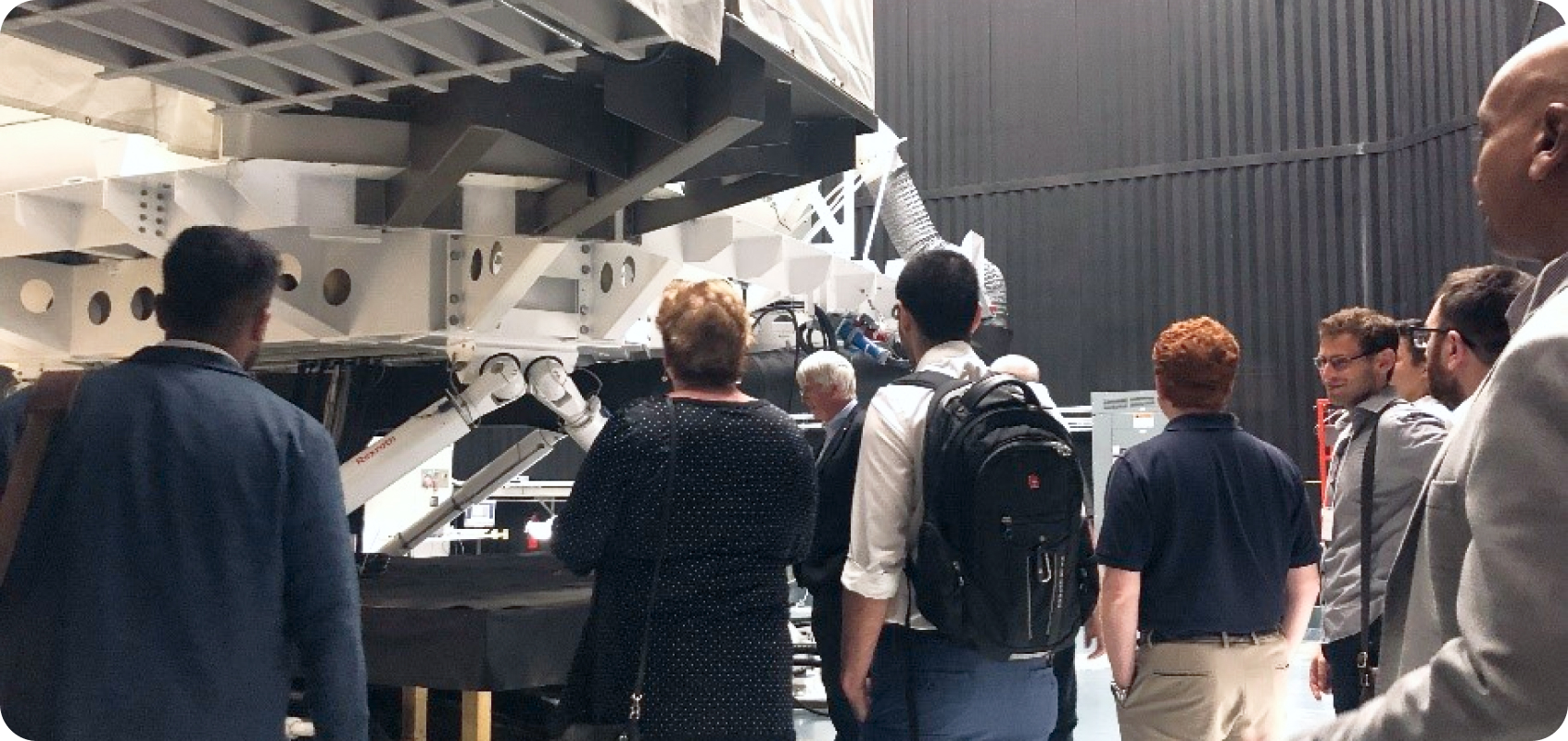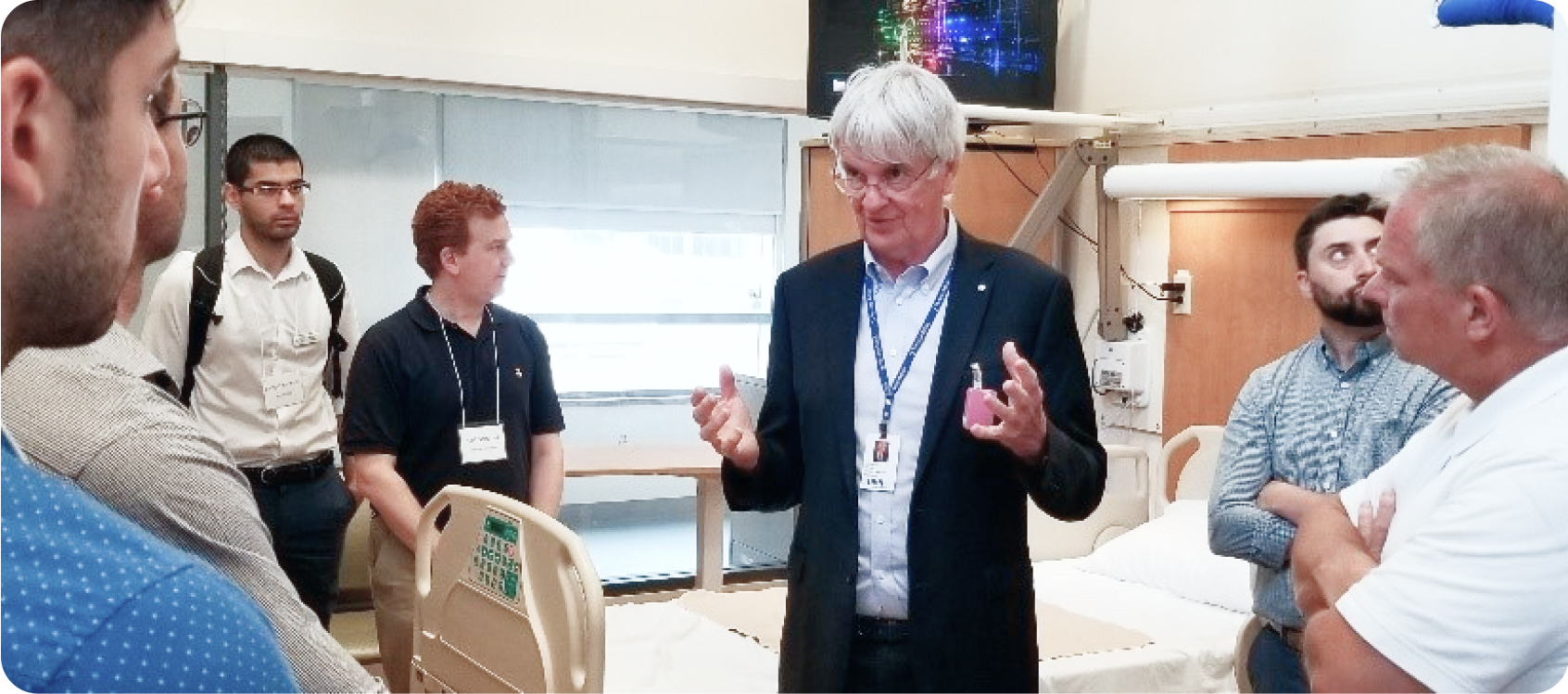BLOG | MARCH 26, 2021
A Market-Driven PATH to Assistive Healthcare

“This partnership really encapsulates my motivation behind building the SmartONE solution. It is an aggregate of some of the greatest problem solvers I have met during my career, working together towards tangible solutions for Canada’s changing demographic.” — Ted Maulucci
Hospitals should be avoided unless absolutely necessary, our group was told by Dr. Geoff Fernie, institute director of TRI-UHN. It sounds contradictory coming from a director at one of the top research hospitals in the world, but his logic is undeniable. For older adults especially, a trip to the hospital can be distressing and lead to further issues like infection or immobility.
“We pay for procedures, not health” — Dr. Geoff Fernie.
As the population ages, how can we optimize spending on healthcare and improve quality of care?
Assistive care technologies in the home are providing the solution and in turn, taking a tremendous load off the healthcare system.
Using SmartONE technology to support assisted living was the topic of discussion during our first SmartONE Seminar at Toronto Rehabilitation Institute on July 22, 2019. Our group of attendees heard Dr. Geoff Fernie and Ted Maulucci speak about their exciting partnership, PATH (Program to Accelerate Technologies for Homecare); Geoff explained how on the back of the SmartONE Solution, researchers are developing systematic approaches to integrating assistive care technology.

Touring the simulators in the Winter Lab at Toronto Rehabilitation Institute (TRI)
The current state of assistive technology in healthcare is that many individual intelligent sensors and monitors work independently, communicating directly to the caregiver. This can lead to false alarms, because the technologies must be sensitive enough to detect changes in the patient’s health or safety based on a single metric.
Too many false alarms can overwhelm the caregivers who must respond to them; even worse, they may start to be ignored. If your smoke detector started ringing twice a day, you would start to assume that it’s a false alarm every time.
On the back of SmartONE’s network solution, these assistive care devices can all be connected, allowing algorithms to analyze a greater aggregate of data and in turn, generate a more intelligent response. More information to analyze and cross-reference means fewer false alarms.
For example, instead of a single fall detector communicating to healthcare providers that someone has fallen, the system could check other cameras and sensors to determine if the person is moving somewhere else in their home. This is what makes the SmartONE platform so powerful – innovative care technologies can be integrated on one network, creating a context in which to make sense of the data in order to communicate the right message to the right people.

Dr. Geoff Fernie showing the group his hospital room simulator, used for the research
and development of commercial healthcare innovations
PATH is split into three phases:
- The first phase is to validate the data of individual assistive care technologies.
- The second phase is market trials; consumers will test and determine which technologies are valuable
to them. - The third phase is an ongoing evaluation of the efficacy and adoption of graduated technologies. SmartONE provides a network to centralize and evaluate these healthcare innovations, forging the path towards greater innovation and growth.
Looking ahead
SmartONE’s own financial contributions are being quadrupled by government support in order to hire the brightest minds across Canada to research assistive care technologies. Currently, there are literature reviews being conducted in the field of homecare systems to provide a base of knowledge on which to move forward.
This is healthcare driven by the needs and market decisions of the people, for the people.
SHARE ARTICLE
MOST RECENT
Latest Articles
GET IN TOUCH















